Dr. Vadym Zayets
v.zayets(at)gmail.com
My Research and Inventions
click here to see all content |

Dr. Vadym Zayetsv.zayets(at)gmail.com |
|
 |
more Chapters on this topic:IntroductionTransport Eqs.Spin Proximity/ Spin InjectionSpin DetectionBoltzmann Eqs.Band currentScattering currentMean-free pathCurrent near InterfaceOrdinary Hall effectAnomalous Hall effect, AMR effectSpin-Orbit interactionSpin Hall effectNon-local Spin DetectionLandau -Lifshitz equationExchange interactionsp-d exchange interactionCoercive fieldPerpendicular magnetic anisotropy (PMA)Voltage- controlled magnetism (VCMA effect)All-metal transistorSpin-orbit torque (SO torque)What is a hole?spin polarizationCharge accumulationMgO-based MTJMagneto-opticsSpin vs Orbital momentWhat is the Spin?model comparisonQuestions & AnswersEB nanotechnologyReticle 11
more Chapters on this topic:IntroductionTransport Eqs.Spin Proximity/ Spin InjectionSpin DetectionBoltzmann Eqs.Band currentScattering currentMean-free pathCurrent near InterfaceOrdinary Hall effectAnomalous Hall effect, AMR effectSpin-Orbit interactionSpin Hall effectNon-local Spin DetectionLandau -Lifshitz equationExchange interactionsp-d exchange interactionCoercive fieldPerpendicular magnetic anisotropy (PMA)Voltage- controlled magnetism (VCMA effect)All-metal transistorSpin-orbit torque (SO torque)What is a hole?spin polarizationCharge accumulationMgO-based MTJMagneto-opticsSpin vs Orbital momentWhat is the Spin?model comparisonQuestions & AnswersEB nanotechnologyReticle 11
more Chapters on this topic:IntroductionScatteringsSpin-polarized/ unpolarized electronsSpin statisticselectron gas in Magnetic FieldFerromagnetic metalsSpin TorqueSpin-Torque CurrentSpin-Transfer TorqueQuantum Nature of SpinQuestions & Answers
more Chapters on this topic:IntroductionTransport Eqs.Spin Proximity/ Spin InjectionSpin DetectionBoltzmann Eqs.Band currentScattering currentMean-free pathCurrent near InterfaceOrdinary Hall effectAnomalous Hall effect, AMR effectSpin-Orbit interactionSpin Hall effectNon-local Spin DetectionLandau -Lifshitz equationExchange interactionsp-d exchange interactionCoercive fieldPerpendicular magnetic anisotropy (PMA)Voltage- controlled magnetism (VCMA effect)All-metal transistorSpin-orbit torque (SO torque)What is a hole?spin polarizationCharge accumulationMgO-based MTJMagneto-opticsSpin vs Orbital momentWhat is the Spin?model comparisonQuestions & AnswersEB nanotechnologyReticle 11
|
Spin and Charge Transport
Introduction.Abstract:A new model for the description of the electron transport in the solid is proposed. Several important facts were included in this model. The origins and features of the spin proximity, spin injection and spin detection effects are described. An enhancement of spin detection and spin injection efficiencies in the vicinity of an interface are predicted. The physical mechanism of an enlargement of spin accumulation due to the conventional Hall effect is described.The new facts and findings:
|
Spin Proximity effect. The spin accumulation diffuses from the ferromagnetic metal into the non-magnetic metal |
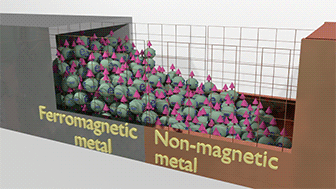 |
In an equilibrium the electron gas is spin-polarized in a ferromagnetic metal and it is not spin-polarized in a non-magnetic metal . At a contact between a ferromagnetic and a non-magnetic metals, some spin accumulation from the ferromagnetic metal diffuses into the non-magnetic metal. The spin polarization in the ferromagnetic metal near the contact becomes smaller and the spin polarization in the non-magnetic metal becomes non-zero. This effect is called the Spin Proximity effect.
Spin Injection
|
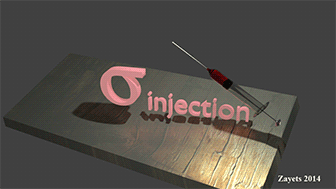 |
Efficiency of spin injection is proportional to the injection conductivity |
When a drift current flows from a ferromagnetic to non-magnetic metal, the spin accumulation from the ferromagnetic metal may be drifted into the non-magnetic metal. This effect is called the spin injection.
The spin injection only modifies the distribution of the spin accumulation across the contact, which was initially established due to the Spin Proximity effect.
Spin Detection
|
 |
Efficiency of spin detection is proportional to the detection conductivity |
The origin and features of the spin detection are understood as follows. A spin accumulation diffuses from regions of a higher spin accumulation to regions of a lower spin accumulation. A diffusion spin current consists of a spin-polarized current and a current, which is not spin-polarized. These two currents diffuse in opposite directions. In the bulk, the two currents are of the same magnitude and there is only a spin diffusion without any charge diffusion. However, for example near a contact, these two currents become unequal and the spin current causes a charge accumulation along direction of the spin diffusion. The charge accumulation is proportional to the diffusion spin current and it can be measured by measuring the voltage along two diffusion points. As consequence, the corresponded spin accumulation can be measured by measuring the voltage . This effect is called the spin detection.
The charge, spin-diffusion, detection and injection conductivities can be calculated from the Boltzmann Transport Equations. Only by solving both the Boltzmann Transport Equations and Spin/Charge Transport equations the spin and charge transport in different materials and geometries can be correctly described.
The modified Boltzmann Transport Equations are obtained as

Several essential facts were included into the modified Boltzmann transport equations. It was shown that instead of one, three transport equations should be used. The transport of “full” states, “spin” states of the TIS assembly and “spin” states of the TIS assembly should be described by individual transport equations. It was shown that the electrons in the electron gas can be either of the running-wave type or the standing-wave type. The different transport mechanisms of these two types of electrons were included in the modified Boltzmann transport equations. The spin properties of electron transport depend significantly on relative amounts of each type of electrons. Two mechanisms of the transport have been included: 19 current of the running-wave electrons and the scattering current.
Two mechanisms of the Spin&Charge transport by Running-Wave Electrons.(1) Current of the running-wave electrons. Origin: Constant movement of electrons in a metal(2) Scattering current. Origin: electron scattering from one state to another |
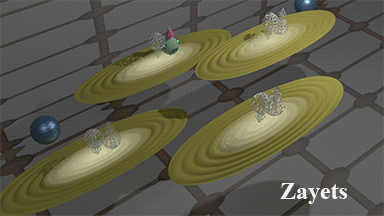 |
The running-wave electron current is the major transport mechanism in the bulk metal. It occurs because of movent of electrons between scatterings. It is very efficient transport mechanism. The standing-wave electrons do not contribute to this transport mechanism.
The Boltzmann transport equations are solved for the running-wave electron current for the case of transport in the bulk of a metal with a low density of defect. It is shown that the detection conductivity is zero and there is no spin detection effect in this case. It is also demonstrated that the contributions the electrons with energies below and above the Fermi energy to the spin injection conductivity are of opposite sign. It leads to the fact the spin injection efficiency is small in a metal and it is determined by a gradient of the density of the states at the Fermi energy in the metal. The spin injection efficiency is substantial in the bulk of the semiconductor and it is of opposite sign for p- and n- semiconductors.
Examples of Scattering current |
||||
|
The scattering current occurs because of the electron movement during scatterings. In the electron gas the electrons are constantly scattered from between quantum states. Because the quantum states have different coordinates in the phase space, each scattering causes an electron movement in the phase space.
The scattering current can only exists when there is a difference in an electron scattering probability between two opposite directions. For example, the scattering conduction is significant in a vicinity of interface, because a substantial difference of an electron scattering probability toward and outward of the interface.
The hopping conductivity and the Spin Hall effect is another example of the scattering current.
The important role of the mean-free path for the spin and charge transport is described. The influence of the mean-free path on transport becomes substantial in two cases. The first case is when the mean-free path becomes comparable to the average distance between defects. The second case is when an electron distance from an interface is comparable or less than the mean-free path. In both cases the number of running-wave electrons decreases and the number of standing-wave electrons increases. As a consequence, the conductivity reduces and importantly the spin properties of the conductivity are significantly modified. The detection conductivity becomes non-zero and the injection conductivity becomes larger.
The spin and charge transport in the vicinity of a contact between two metals are substantially different from the transport in the bulk of metals. In the vicinity of the contact, the number of the running-wave electrons decreases and the number of the standing-wave electrons increases compared to the bulk. In the bulk the major transport mechanism is the current of the running-wave electrons and the scattering current is often significantly smaller. In contrast, in the vicinity of an interface the current of the running-wave electrons decreases or even becomes negligible, but the scattering current increases and often became the dominant transport mechanism.
Two mechanisms of the Spin&Charge transport by Running-Wave Electrons.(1) Current of the running-wave electrons. Origin: Constant movement of electrons in a metal(2) Scattering current. Origin: electron scattering from one state to another |
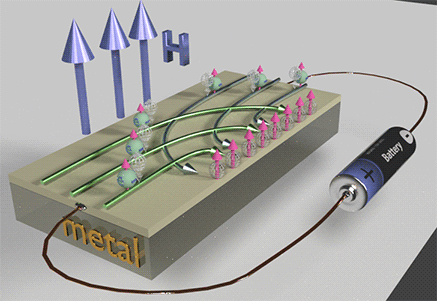 |
The Hall effect occurs when a magnetic field is applied perpendicularly to the direction of a drift current. In this case both the electrons and the holes turn out from the flow direction and they are accumulated at same side of the wire. When the electron gas is spin-polarized, the spin-polarized electrons and the spin-polarized holes have the same spin direction. Therefore, the accumulation of the electrons and the holes is accompanied by the substantial spin accumulation.
Relativistic origin of the Spin-Orbit Interaction |
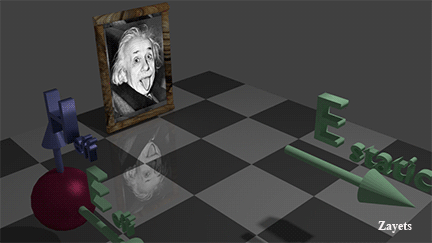 |
An electron moving in an electrical field experiences an effective magnetic field, which acts on the electron magnetic moment (spin). The interaction of the electron magnetic moment with the effective magnetic field is called the spin-orbit interaction.
The feature of the spin-orbit interaction in an electron gas are studied.
The origin of the Spin Hall effect is explained.
What do we know about holes in a solid? Is a hole a positive particle? |
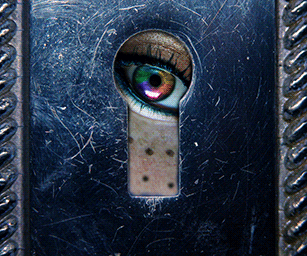 |
In a solid all positively-charged particles (the protons) are localized inside atomic nuclears and they do not transport the charge and the spin. Only negatively-charged particles (the electrons) transport the charge and the spin. However, some electrons with energies lower than the Fermi energy behave like positively-charged particles. For example, in an electrical field they diffuse from a "+" to a "-" drain.
The features of the electron and hole currents are described.
I will try to answer your questions as soon as possible